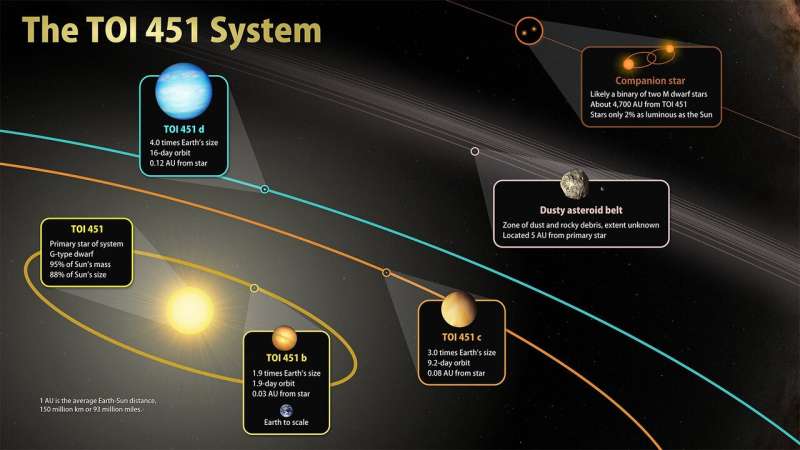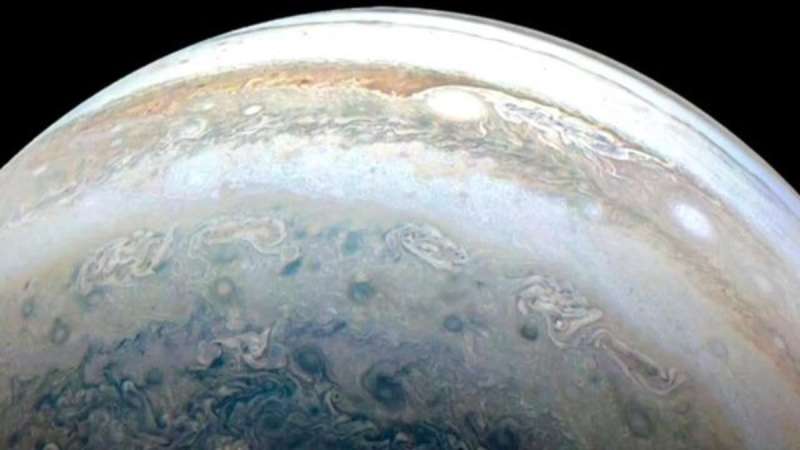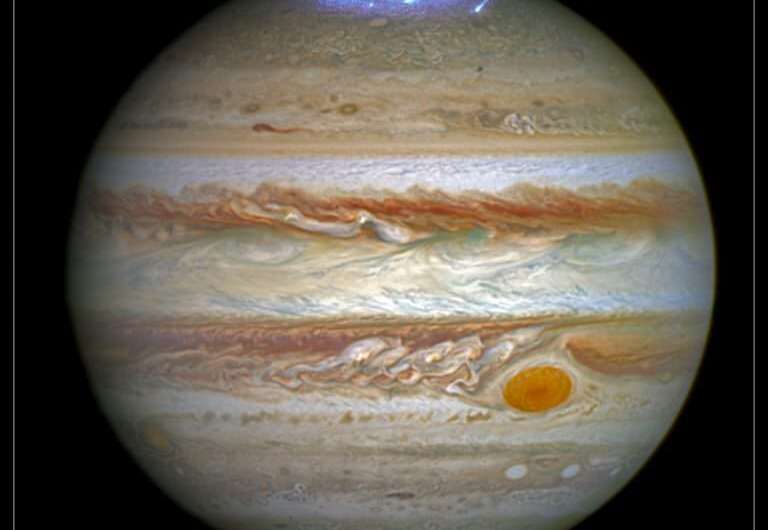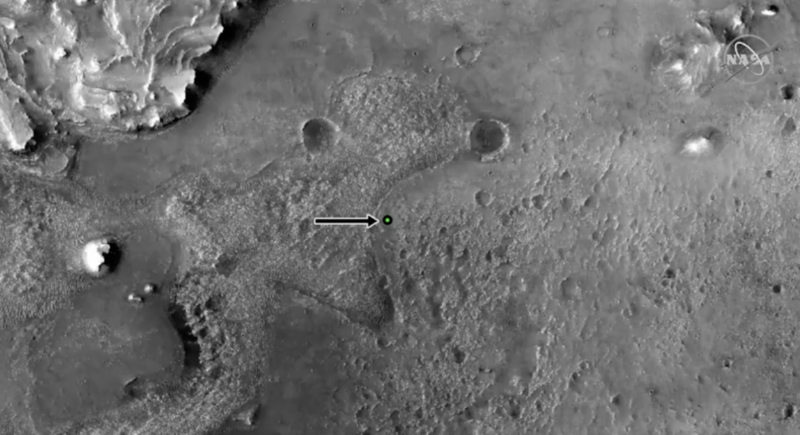Space Thread
Previous 1 ... 181 182 183 184 185 186 187 ... 241 Next
DrCaleb @ Mon Feb 15, 2021 7:26 am
$1:
Earth to Voyager 2: After a Year in the Darkness, We Can Talk to You Again

In the nearly 44 years since NASA launched Voyager 2, the spacecraft has gone beyond the frontiers of human exploration by visiting Uranus, Neptune and, eventually, interstellar space.
Last March, the agency was compelled to shut down its only means of reaching 12 billion miles across the heavens to this robotic trailblazer. On Friday, Earth’s haunting silence will come to an end as NASA switches that communications channel back on, restoring humanity’s ability to say hello to its distant explorer.
Because of the direction in which it is flying out of the solar system, Voyager 2 can only receive commands from Earth via one antenna in the entire world. It’s called DSS 43 and it is in Canberra, Australia. It is part of the Deep Space Network, or DSN, which along with stations in California and Spain, is how NASA and allied space agencies stay in touch with the armada of robotic spacecraft exploring everything from the sun’s corona to the regions of the Kuiper belt beyond the orbit of Pluto. (Voyager 2’s twin, Voyager 1, is able to communicate with the other two stations.)
A round-trip communication with Voyager 2 takes about 35 hours — 17 hours and 35 minutes each way.

In the nearly 44 years since NASA launched Voyager 2, the spacecraft has gone beyond the frontiers of human exploration by visiting Uranus, Neptune and, eventually, interstellar space.
Last March, the agency was compelled to shut down its only means of reaching 12 billion miles across the heavens to this robotic trailblazer. On Friday, Earth’s haunting silence will come to an end as NASA switches that communications channel back on, restoring humanity’s ability to say hello to its distant explorer.
Because of the direction in which it is flying out of the solar system, Voyager 2 can only receive commands from Earth via one antenna in the entire world. It’s called DSS 43 and it is in Canberra, Australia. It is part of the Deep Space Network, or DSN, which along with stations in California and Spain, is how NASA and allied space agencies stay in touch with the armada of robotic spacecraft exploring everything from the sun’s corona to the regions of the Kuiper belt beyond the orbit of Pluto. (Voyager 2’s twin, Voyager 1, is able to communicate with the other two stations.)
A round-trip communication with Voyager 2 takes about 35 hours — 17 hours and 35 minutes each way.
https://www.nytimes.com/2021/02/12/scie ... twork.html
DrCaleb @ Mon Feb 15, 2021 7:33 am
$1:
TESS discovers new worlds in a river of young stars

Using observations from NASA's Transiting Exoplanet Survey Satellite (TESS), an international team of astronomers has discovered a trio of hot worlds larger than Earth orbiting a much younger version of our Sun called TOI 451. The system resides in the recently discovered Pisces-Eridanus stream, a collection of stars less than 3% the age of our solar system that stretches across one-third of the sky.
The planets were discovered in TESS images taken between October and December 2018. Follow-up studies of TOI 451 and its planets included observations made in 2019 and 2020 using NASA's Spitzer Space Telescope, which has since been retired, as well as many ground-based facilities. Archival infrared data from NASA's Near-Earth Object Wide-Field Infrared Survey Explorer (NEOWISE) satellite—collected between 2009 and 2011 under its previous moniker, WISE—suggests the system retains a cool disk of dust and rocky debris. Other observations show that TOI 451 likely has two distant stellar companions circling each other far beyond the planets.
"This system checks a lot of boxes for astronomers," said Elisabeth Newton, an assistant professor of physics and astronomy at Dartmouth College in Hanover, New Hampshire, who led the research. "It's only 120 million years old and just 400 light-years away, allowing detailed observations of this young planetary system. And because there are three planets between two and four times Earth's size, they make especially promising targets for testing theories about how planetary atmospheres evolve."

Using observations from NASA's Transiting Exoplanet Survey Satellite (TESS), an international team of astronomers has discovered a trio of hot worlds larger than Earth orbiting a much younger version of our Sun called TOI 451. The system resides in the recently discovered Pisces-Eridanus stream, a collection of stars less than 3% the age of our solar system that stretches across one-third of the sky.
The planets were discovered in TESS images taken between October and December 2018. Follow-up studies of TOI 451 and its planets included observations made in 2019 and 2020 using NASA's Spitzer Space Telescope, which has since been retired, as well as many ground-based facilities. Archival infrared data from NASA's Near-Earth Object Wide-Field Infrared Survey Explorer (NEOWISE) satellite—collected between 2009 and 2011 under its previous moniker, WISE—suggests the system retains a cool disk of dust and rocky debris. Other observations show that TOI 451 likely has two distant stellar companions circling each other far beyond the planets.
"This system checks a lot of boxes for astronomers," said Elisabeth Newton, an assistant professor of physics and astronomy at Dartmouth College in Hanover, New Hampshire, who led the research. "It's only 120 million years old and just 400 light-years away, allowing detailed observations of this young planetary system. And because there are three planets between two and four times Earth's size, they make especially promising targets for testing theories about how planetary atmospheres evolve."
https://phys.org/news/2021-02-tess-worl ... stars.html
raydan @ Mon Feb 15, 2021 3:21 pm

xerxes @ Mon Feb 15, 2021 3:54 pm
Scape @ Tue Feb 16, 2021 11:02 pm
DrCaleb @ Thu Feb 18, 2021 1:16 pm
$1:
Juno just saw a spacerock crash into Jupiter

Timing is extraordinarily important in many aspects of astronomy. If an astronomer or their instrument is looking the wrong way at the wrong time, they could miss something spectacular. Alternatively, there are moments when our instruments capture something unexpected in regions of space that we were searching for something else. That is exactly what happened recently when a team of scientists, led by Rohini Giles at the Southwest Research Institute, saw an image of what is likely a meteor impacting Jupiter's atmosphere.
The team collects data from the UVS, one of the instruments on Juno, NASA's mission tasked with studying the largest solar system planet up close. UVS is Juno's ultraviolet spectrograph, which collects data in the ultraviolet spectra from 68-210 nm. Its primary mission is to study Jupiter's atmosphere and watch for its breathtaking auroras.
Recently, when reviewing a batch of images that came in from the sensor, one of Dr. Giles' colleagues noticed a huge spike in brightness in an area outside of the normal auroral zone. As with much other science, this discovery started with someone finding interesting data when they didn't expect to see it.
The team's first thought was to eliminate other sources that could have caused the spike. First they eliminated the aurora they were searching for as part of their normal research. This area of the planet where the spike appeared on was outside the normal bounds of the auroras they studied.


Timing is extraordinarily important in many aspects of astronomy. If an astronomer or their instrument is looking the wrong way at the wrong time, they could miss something spectacular. Alternatively, there are moments when our instruments capture something unexpected in regions of space that we were searching for something else. That is exactly what happened recently when a team of scientists, led by Rohini Giles at the Southwest Research Institute, saw an image of what is likely a meteor impacting Jupiter's atmosphere.
The team collects data from the UVS, one of the instruments on Juno, NASA's mission tasked with studying the largest solar system planet up close. UVS is Juno's ultraviolet spectrograph, which collects data in the ultraviolet spectra from 68-210 nm. Its primary mission is to study Jupiter's atmosphere and watch for its breathtaking auroras.
Recently, when reviewing a batch of images that came in from the sensor, one of Dr. Giles' colleagues noticed a huge spike in brightness in an area outside of the normal auroral zone. As with much other science, this discovery started with someone finding interesting data when they didn't expect to see it.
The team's first thought was to eliminate other sources that could have caused the spike. First they eliminated the aurora they were searching for as part of their normal research. This area of the planet where the spike appeared on was outside the normal bounds of the auroras they studied.

$1:
Jupiter has spectacular aurora, such as this view captured by the Hubble Space Telescope.
https://phys.org/news/2021-02-juno-spac ... piter.html
xerxes @ Thu Feb 18, 2021 2:02 pm
Perseverance has landed!!
Zipperfish @ Thu Feb 18, 2021 2:20 pm
raydan raydan:

Well maybe if dark matter would consider interacting a bit more....
Scape @ Thu Feb 18, 2021 4:54 pm
Scape @ Thu Feb 18, 2021 7:14 pm
DrCaleb @ Fri Feb 19, 2021 6:58 am
That is going to be an amazing voyage. ![Drink up [B-o]](./images/smilies/drinkup.gif)
CDN_PATRIOT @ Fri Feb 19, 2021 7:41 am
It's 2021, and yet the first images are black & white?
WAT.
-J.
DrCaleb @ Fri Feb 19, 2021 8:21 am
CDN_PATRIOT CDN_PATRIOT:
It's 2021, and yet the first images are black & white?
All images of Mars are usually black and white. They run a colour filter over the lens, and take pictures with 3 different filters, send them back to Earth, and recombine the images to make a colour photo.
The distance is too great to reliably send the large amount of data that colour pictures require. That's the trade off with computers and communication. The faster you want them, the more power they require. The longer the distance, the less power there is to receive. The more data, the higher the frequency and the more power required. So there is a trade off, less data, lower power. So 3 pictures with different filters is possible where one colour photo isn't, given the limited power available to the probe.
Voyager takes 17 hours to send data each way, and the amount of power it has to send data is less than the digital watch on your arm. It doesn't have the power to send pictures.
But the pictures are spectacular!
DrCaleb @ Fri Feb 19, 2021 8:45 am
Look where they landed the Perserverence rover!
https://arstechnica.com/science/2021/02 ... steps-are/
They shot a pea from LA to London, and it landed in a shot glass. ![]()
CDN_PATRIOT @ Fri Feb 19, 2021 9:18 am
DrCaleb DrCaleb:
All images of Mars are usually black and white. They run a colour filter over the lens, and take pictures with 3 different filters, send them back to Earth, and recombine the images to make a colour photo.
The distance is too great to reliably send the large amount of data that colour pictures require. That's the trade off with computers and communication. The faster you want them, the more power they require. The longer the distance, the less power there is to receive. The more data, the higher the frequency and the more power required. So there is a trade off, less data, lower power. So 3 pictures with different filters is possible where one colour photo isn't, given the limited power available to the probe.
The distance is too great to reliably send the large amount of data that colour pictures require. That's the trade off with computers and communication. The faster you want them, the more power they require. The longer the distance, the less power there is to receive. The more data, the higher the frequency and the more power required. So there is a trade off, less data, lower power. So 3 pictures with different filters is possible where one colour photo isn't, given the limited power available to the probe.
I'm just a little impatient. SPACE RULES!
-J.
Previous 1 ... 181 182 183 184 185 186 187 ... 241 Next